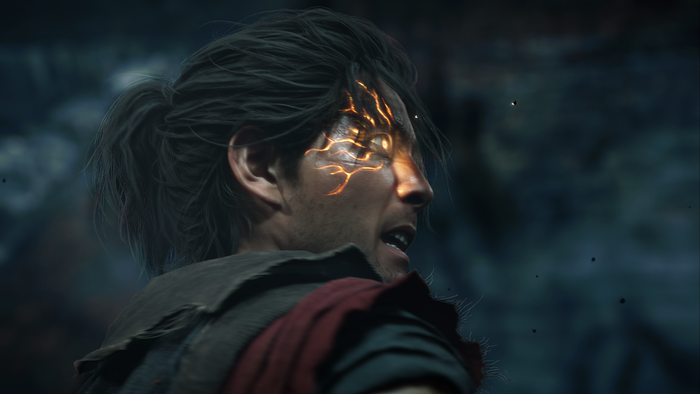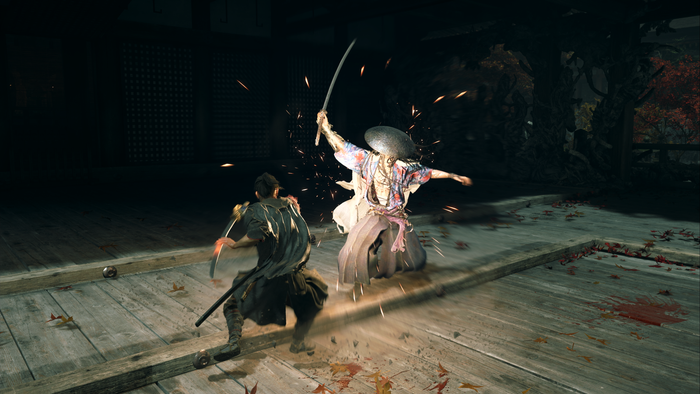Capcom has undergone an impressive period of rejuvenation over the last decade. The upside of successes with Monster Hunter, Resident Evil, Street Fighter, and Devil May Cry is that the developer is now reviving more legacy franchises for new projects. One such revival is Onimusha: Way of the Sword, the upcoming reboot for the samurai action-horror series that made Capcom’s first step into the next-gen era of the early 2000s a memorable one.
At Summer Game Fest 2025, we got an early look at the first gameplay for Way of the Sword and interviewed game director Satoru Nihei and producer Akihito Kadowaki about their creation, which ended up being one of the most talked about games from the showcase. Seeing the reboot’s new combat and visual style in action, we talked about how the latest technology from Capcom was instrumental in bringing the series back to life.
A New Samurai’s Destiny
“We started thinking about this new game in 2020, and one of the things that we really wanted was to have a deep focus on more cinematic and satisfying swordplay for the series, and we have better technology to utilize for this modern version of Onimusha,” Nihei said. “We also put a lot of effort into the story, the setting, and characters as well—we’re building something entirely new for the series.”
The original Onimusha was initially conceived as a PlayStation 1 spin-off for the Resident Evil series, aiming to take the survival horror experience to Sengoku-era Japan. It eventually became its own project and went on to become one of Capcom’s early technical showpieces for the PS2 in 2001. With its stylish combat, strong environmental design, and realistic facial and performance capture—featuring actor Takeshi Kaneshiro as the protagonist, Samanosuke Akechi—the original game became one of the PS2’s early breakout hits.
The reboot for Onimusha carries a similar promise of a rousing samurai action fantasy boasting impressive character and environmental visuals. Seeing the extended demo at SGF, the project appears to be an worthy showcase for the RE Engine, which has powered recent games like Monster Hunter Wilds, Dragon’s Dogma 2, and the upcoming Resident Evil Requiem.
In the reboot, the story is centered around historical Japanese swordsman Musashi Miyamoto (modeled after late actor Toshiro Mifune with approval from the Mifune estate), who becomes an unwitting owner of the Oni gauntlet that grants him the strength to face off against invading demons and absorb their souls for more power. Armed with his trusty sword, a demonic gauntlet, and a mysterious companion guiding him through Oni-infested Feudal Japan, Miyamoto will take on dangerous monsters and even rival swordsmen who seek to stake claim to a country in chaos.
There’s an impressive level of detail within the design of the setting evident in the demo, which takes place in a crumbling village before moving towards a castle overrun. The developers at Capcom worked extensively to recreate Feudal Japan, including real-world locations such as Kiyomizu-dera temple—which was crafted from input from local historians.

According to Nihei, one particular area of focus for building a new Onimusha action game was to convey a sense of realism and cinematic shine. This was present in the original, but the reboot leans into this further, with the protagonist being both a remarkable and emotive swordsman as well as a reluctant hero who navigates encounters with a resolve that’s still being hardened.
“In terms of the cinematic feel and everything, we put a lot of effort into the facial capture for the characters,” said the game director. “We paid a lot of attention to the wrinkles on the faces and different features of these characters, like when they scrunch up their faces and emotive details, [especially] during combat encounters. We really focused on the animation of combat and character expression, and the different types of terrain in the environment that the characters are in.”
RE-defining Samurai action-horror
The combat and general structure of Way of the Sword go for a more story-driven progression, which is an interesting departure from the series’ Resident Evil roots. The devs stated that it’s essentially a linear experience, but the game will still offer opportunities to explore, interact with townspeople, and take on optional activities.
Combat is far more deliberate and methodical with its swordplay than it was in previous series entries. It’s less about using combo attacks to whittle down enemy health and more about being efficient, cleaving foes in half with one or two strikes. However, one thing that the developers were clear in stating was that the combat was not inspired by Soulslike games, which have had a significant impact on the action genre over the decade.
“We didn’t really pay attention to other action games like Dark Souls and Sekiro when we were developing our take on an Onimusha game,” the director said. “What was most important for us was how we brought the series and its ideas back in a compelling way. What truly makes an Onimusha game, and how can you utilize the latest technology to bring the charm and appeal of the series to modern gamers? Those questions were what was most important for us when we were building the game.”

The general flow of combat focuses heavily on engaging multiple enemies and anticipating their movements to expose their weaknesses. Parrying enemy attacks will open up their defense, allowing you to launch a counterattack. If you use an Issen technique to strike an enemy right before their attack hits, you will deal an instant death blow.
Miyamoto is also a scrappy fighter and can use grabs and contextual skills to counter enemies. In one amusing encounter, Miyamoto snatched up a table to use as a shield from enemies firing arrows and immediately tossed it back at them when an opening came.
Witnessing combat unfold with superbly designed animations was impressive—especially Musahsi’s special demonic weapons that pierce the veil between realms. Capcom’s RE Engine tech continues to be a tremendous showcase for detailed character animations and conveying sheer scope.
According to Nihei, the team’s particular vision for Onimusha: Way of the Sword would only have been possible with the current technology at the developer’s disposal.
“With the new technology we have, we were able to kind of bring out the best of our special effects and character definition in the game, especially during the battle scenes that you saw from the presentation,” he said. “We also have a boss encounter that will do attacks that will split the ground. Those kinds of details and level of quality that we have for this game was something that we can only do with the engine technology that we have now, and that’s what will make this entry [of] Onimusha feel really special.”



